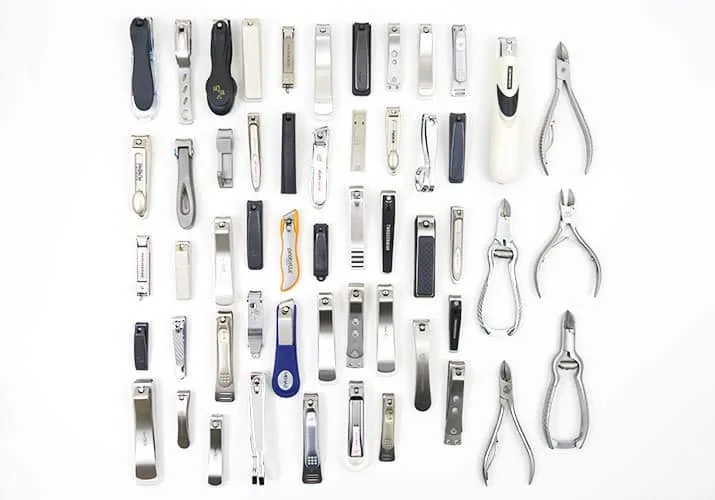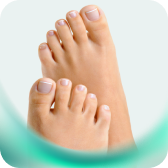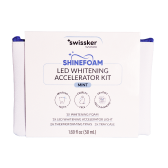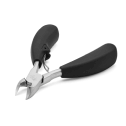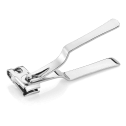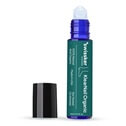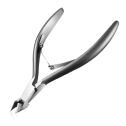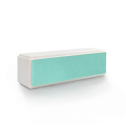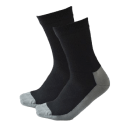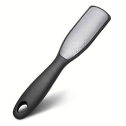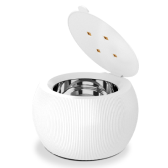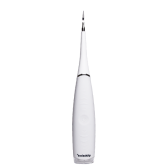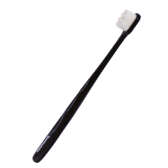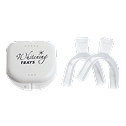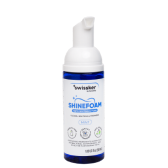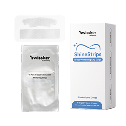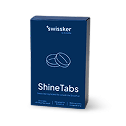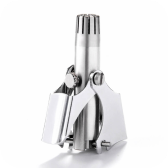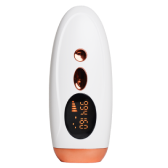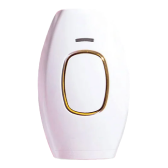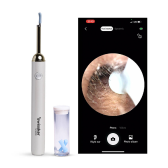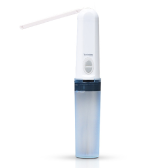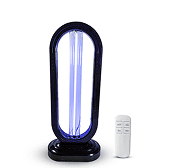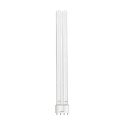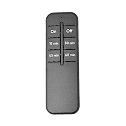Proper toenail care is essential for maintaining overall foot health and avoiding issues like ingrown toenails, infections, or discomfort. Trimming your toenails regularly and using the best toenail clipper, like the Swissklip Heavy Duty can help keep your feet looking and feeling their best.
We’ve gathered this and many other information here in this website, you can read more about toenail clippers.
With a variety of toenail clippers available on the market, it can be challenging to determine which one is the best toe nail clipper for your needs. Each type of clipper is designed to cater to specific requirements and preferences. In this ultimate guide, we will explore the different types of toenail clippers, discuss their pros and cons, and provide advice on how to choose the perfect one for you.
Types of Toenail Clippers
Before diving into the details of each toenail clipper type, it’s crucial to understand the different options available and how they can cater to specific needs. Familiarizing yourself with the various designs and features will help you make an informed decision when choosing the perfect clipper. In this section, we will discuss four popular types of toenail clippers: standard, guillotine, scissor, and nipper clippers, along with their respective pros and cons to help you find the best match for your toenail care routine.
Standard Toe Nail Clippers
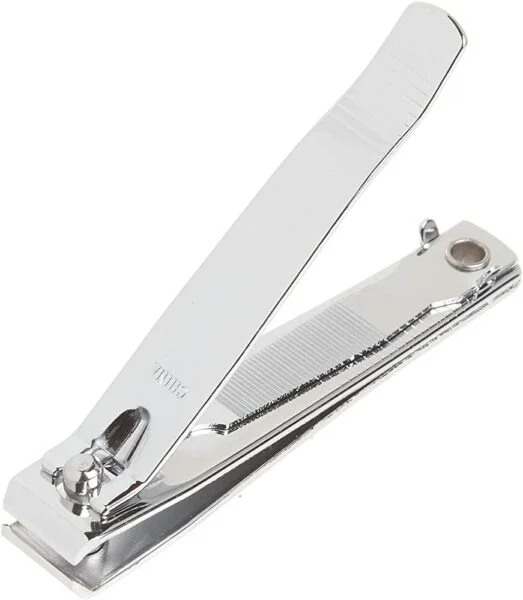
Standard toenail clippers are the most common type of clippers found in households. They feature a curved or straight cutting edge and a lever mechanism that allows you to apply pressure to cut the nail. The lever is attached to a base, which pivots when the lever is pressed, bringing the cutting edges together to trim the nail. Some models also include a built-in nail file and a small compartment to catch nail clippings.
Pros and cons
Standard toenail clippers are widely used for their simplicity and convenience. By understanding the advantages they offer, you can determine if they are the best fit for your needs.
Let’s get to know the primary benefits of using standard toenail clippers for your nail care routine:
- Easy to use: Standard toenail clippers are simple to operate, making them suitable for users of all ages and experience levels.
- Affordable: These clippers are generally less expensive than other types, making them a budget-friendly option for most people.
- Portable: Their compact size makes standard toenail clippers easy to carry in a purse, toiletry bag, or grooming kit.
- Versatile: Standard toenail clippers can be used for both fingernails and toenails, depending on the size of the clipper.
Despite their popularity, standard toenail clippers come with certain drawbacks that might make them less suitable for some users. It’s essential to weigh these disadvantages against the benefits to decide if they are the right choice for your specific requirements.
Let’s read now the main limitations of standard toenail clippers:
- Limited leverage: The lever mechanism may not provide enough force to cut through very thick toenails, potentially causing discomfort or leaving jagged edges.
- Inaccurate cuts: The curved or straight cutting edge can make it difficult to achieve precise cuts, increasing the risk of ingrown toenails or uneven nail edges.
- Durability: Lower-quality standard toenail clippers may dull quickly or break under pressure, requiring frequent replacement.
In summary, standard toenail clippers are a popular choice due to their ease of use and affordability. However, they may not be the best option for individuals with thick or hard nails, as they can struggle to provide clean and precise cuts.
Guillotine Toe Nail clippers
Guillotine toenail clippers, although more commonly used for pets, can also serve as an effective tool for human nail care.
The unique design of these clippers offers certain advantages that may appeal to those looking for a more precise and gentle cutting experience.
Let’s explore the design, pros, and cons of guillotine toenail clippers for humans to help you determine if they are the right choice for your nail care routine.
Description and design
Description and design
Guillotine toenail clippers feature a small, circular hole where you place your toenail, and a sliding blade that moves across the hole to trim the nail when pressure is applied. They are named after the guillotine due to their similar cutting mechanism. Guillotine clippers are less common for human use than for pets, but they are still available in some specialized grooming kits.
Pros
- Precise cuts: The sliding blade provides a clean and accurate cut, which can help reduce the risk of ingrown toenails and other nail-related issues.
- Easy to maneuver: The circular hole and sliding blade design make it simple to position the clipper correctly on the nail, ensuring an even cut.
- Gentle on nails: Guillotine clippers generally exert less force on the nail compared to standard clippers, making them more comfortable to use, especially for those with sensitive nails.
Cons
- Less common: Guillotine clippers for humans are not as widely available as other types of clippers, making them harder to find and potentially more expensive.
- Learning curve: Some users may find it challenging to operate guillotine clippers at first, as they require a different technique compared to standard clippers.
- Limited size: Guillotine clippers may not be suitable for individuals with particularly large or thick nails, as the circular hole could be too small to accommodate these nails comfortably.
In summary, guillotine toenail clippers for humans offer precise and gentle cuts, making them an attractive option for those seeking accuracy and comfort. However, their limited availability, initial learning curve, and potential size constraints may make them less suitable for some users.
Scissor Nail clippers
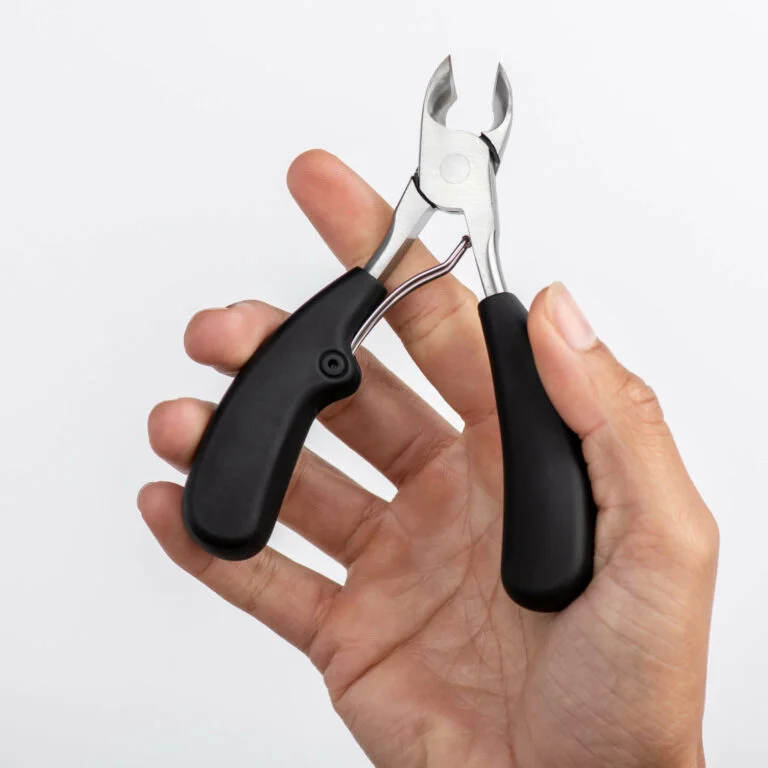
Scissor nail clippers offer a distinct cutting experience that combines the precision of scissors with the durability needed for nail care.
While they may not be as commonly used as standard clippers, they can provide notable advantages for certain individuals. In this section, we will discuss the design, pros, and cons of scissor nail clippers, helping you decide if they are the ideal choice for your nail grooming needs.
Scissor Clippers Design
Scissor nail clippers, as the name suggests, resemble a pair of scissors with curved or straight blades specifically designed for cutting nails. The user holds the handles and applies pressure to bring the blades together, trimming the nail. Some scissor clippers have a spring mechanism that helps separate the blades after each cut, making them easier to use.
Scissor Clippers Pros
- Precision: Scissor clippers offer excellent control and precision when cutting nails, reducing the risk of uneven edges or ingrown toenails.
- Strength: These clippers are typically made of durable materials, such as stainless steel, which allows them to easily cut through thick or hard nails.
- Ergonomic design: Scissor clippers often feature comfortable handles and a spring mechanism, making them more ergonomic and less tiring to use.
- Easy to clean and sanitize: The simple design of scissor clippers makes them easy to clean and sanitize, promoting better hygiene.
Scissor Clippers Cons
- Learning curve: Using scissor clippers effectively may require some practice, as the technique is different from standard or guillotine clippers.
- Price: High-quality scissor clippers may be more expensive than other types of clippers, making them a less budget-friendly option.
- Size: Scissor clippers are generally larger than standard clippers, making them less convenient for on-the-go use, but at the same time this makes them harder to get lost.
In summary, scissor nail clippers provide excellent precision and strength, making them suitable for individuals with thick or hard nails, especially if they are podiatrist recommended toenail clipper
Nail Nipper
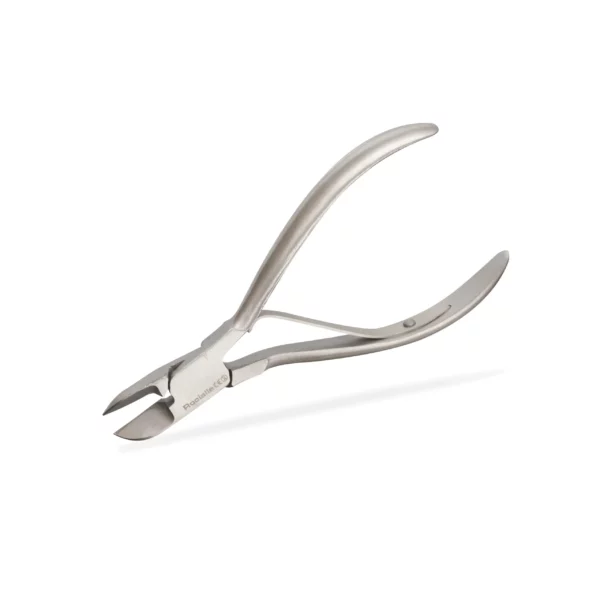
Toe Nail Nippers, favored by professionals for their powerful cutting capabilities, offer a solution for those dealing with challenging nail conditions or seeking a more precise and effective cutting tool.
These clippers combine a plier-like design with durable materials to handle even the toughest nails. In this section, we will delve into the design, pros, and cons of nipper nail clippers to help you decide if they are the right choice for your nail care needs.
What is a Nail Nipper?
Nail Nipper, also known as toe nail nippers or podiatry nippers, is a nail tool with a plier-like design, two handles that are squeezed together to bring the curved or straight cutting edges together. These toe nail nippers are often used by professionals, such as podiatrists and manicurists, for trimming thick, hard, or ingrown toenails. Nail Nippers are made from durable materials, like stainless steel or titanium nail clipper, to ensure they can handle challenging nail conditions.
Nail Nipper Pros
- Powerful cutting: Nail Nippers are designed to handle thick, hard, or ingrown nails, providing clean and precise cuts without causing discomfort.
- Professional quality: Nail Nippers are often used by professionals, ensuring high-quality construction and performance.
- Ergonomic design: Nail Nipper usually feature long handles and a spring mechanism, making them comfortable to use and reducing hand fatigue.
- Precise control: The plier-like design allows for better control and precision when trimming nails, reducing the risk of uneven edges or further nail issues.
Nail Nipper Cons
- Price: Nail Nipper tend to be more expensive than other types of clippers due to their professional-grade materials and construction.
- Learning curve: Using a nail nipper effectively may require practice and experience, as the technique is different from other types of clippers.
- Size and portability: Nail Nippers are typically larger and heavier than other clippers, making them less convenient for travel or on-the-go use.
In summary, a nail nipper offer powerful cutting capabilities and professional quality, making them an excellent choice for those with challenging nail conditions or seeking a high-performance tool. However, their higher price, learning curve, and reduced portability may make them less suitable for casual users or those with minimal nail care needs.
Features to Consider When Choosing a Toenail Clipper
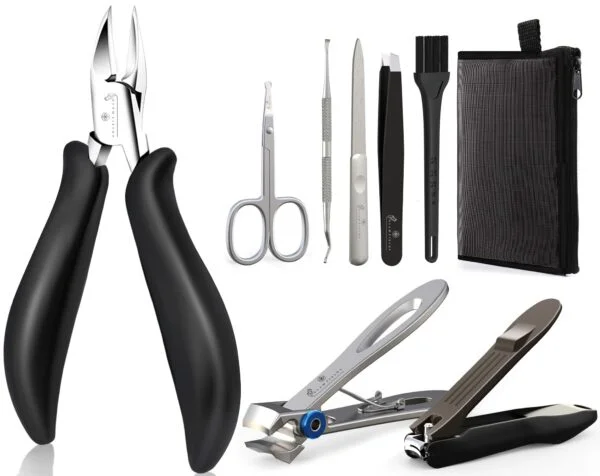
When selecting the perfect toenail clipper, it’s essential to consider specific features that can impact your nail care experience. By evaluating these factors, you can find a clipper that meets your unique requirements and preferences. Here, we will discuss the key features to consider when choosing a toenail clipper.
Material and build quality
- Look for clippers made from durable materials, such as stainless steel or high-quality plastic, to ensure longevity and resistance to rust or corrosion.
- Examine the clipper’s construction to ensure it is sturdy, with no loose parts or weak points that could break under pressure.
Blade sharpness
- Sharp blades are crucial for clean and precise cuts, minimizing the risk of jagged edges or ingrown toenails.
- High-quality clippers typically have sharper blades that remain sharp for an extended period, reducing the need for frequent replacements or sharpening.
Size and ergonomics
- Consider the size of the clipper, as it should be comfortable to hold and operate, providing sufficient leverage for cutting your nails.
- Clippers with ergonomic designs, such as non-slip handles or a spring mechanism, can make the process more comfortable and reduce hand fatigue.
Safety features
- Look for clippers with safety features, such as a safety guard to prevent over-trimming or a built-in compartment to catch nail clippings.
- Some clippers also include a nail file or cleaning tool for added convenience and safety.
Additional accessories
- Consider whether the clipper comes with any additional accessories, such as a carrying case, nail file, or cleaning brush, which can add value and convenience to your purchase.
- Keep in mind that while additional accessories may be useful, they should not compromise the overall quality and performance of the clipper itself.
By considering these features when choosing a toenail clipper, you can ensure that the tool you select will be efficient, durable, and comfortable, providing the best possible care for your nails.
Specialized Toenail Clippers
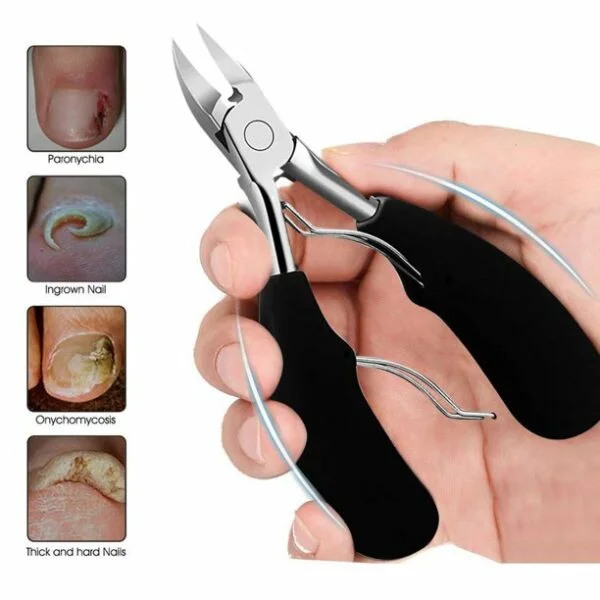
In addition to the standard types of toenail clippers, there are specialized clippers designed to address specific nail care needs or challenges. These clippers cater to users with unique requirements or conditions, such as thick nails, ingrown toenails, or limited mobility.
The best toenail clipper for all sort of special needs is Swissklip Heavy Duty. In this section, we will discuss some of these specialized toenail clippers and their unique features.
Toe Nail Clippers for thick nails
- Designed with wider, more durable blades to accommodate thick or hard nails, these clippers provide the necessary strength to cut through challenging nails without causing discomfort or damage.
- Some models feature long handles or increased leverage for added power, making it easier to trim thick nails with minimal effort.
Toe Nail Clippers for ingrown toenails
- These clippers are specifically designed to address ingrown toenails, with features such as a narrow, angled tip to reach the corners of the nail without causing damage to the surrounding skin.
- Some models also include a lifting tool to help gently lift the ingrown nail, making it easier to trim and prevent further discomfort or infection.
Toe Nail Clippers for elderly or people with Limited Mobility
- These clippers are designed to accommodate individuals with limited hand strength, dexterity, or mobility, such as those with arthritis or other conditions affecting hand function.
- Features may include large, easy-to-grip handles, extended levers, or a built-in magnifying glass to improve visibility and control during the trimming process.
Toe Nail Clippers with LED lights
- Clippers with built-in LED lights provide enhanced visibility, making it easier to see and trim your nails in low-light conditions or for those with vision impairments.
- This feature can improve precision and safety by reducing the risk of accidental cuts or uneven trimming.
By exploring these specialized toenail clippers, you can find a tool tailored to your specific needs, ensuring a more comfortable and effective nail care experience. Keep in mind that it’s essential to choose a clipper that aligns with your requirements and preferences, providing the best possible care for your toenails.
How to Use Toenail Clippers and Proper Maintenance of Toenail Clippers
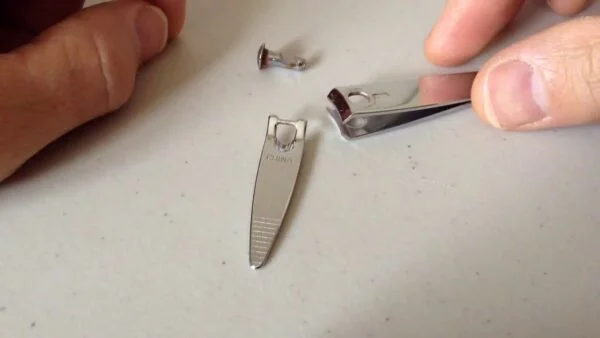
o ensure the best possible nail care experience and extend the life of your toenail clippers, it’s essential to use and maintain them correctly. In this section, we will provide tips on how to properly use your toenail clippers and maintain them to keep them in optimal condition.
Techniques for trimming toenails safely and effectively
- Soften your nails: To make trimming easier and more comfortable, soak your feet in warm water for a few minutes to soften your nails before clipping.
- Trim straight across: To prevent ingrown toenails, cut your nails straight across, avoiding curved or rounded edges.
- Don’t cut too short: Avoid cutting your nails too short, as this can lead to discomfort and increase the risk of infection.
- Use the appropriate clipper: Choose the right type of clipper for your needs, whether it’s a standard, guillotine, scissor, or nipper clipper, to ensure the best results.
Cleaning and Disinfecting your nail clippers
Proper maintenance and cleaning of your nail clippers are essential for ensuring their longevity, performance, and hygiene.
Regular care will help prevent rust, dullness, and the spread of bacteria, resulting in a safer and more efficient nail trimming experience.
In this section, we will provide tips for maintaining and cleaning your clippers
- Clean after each use: After trimming your nails, use a soft brush or cloth to remove any nail clippings or debris from the clippers. Wipe the clippers down with rubbing alcohol or a disinfectant solution to sanitize the surfaces and remove any remaining dirt or bacteria. Rinse the clippers under warm water to remove the alcohol or disinfectant, then dry them thoroughly with a clean towel.
- Sanitize regularly: To prevent the spread of bacteria or infection, sanitize your clippers regularly by wiping them with alcohol or a disinfectant solution.
- Allow to air dry: After cleaning and sanitizing, allow your clippers to air dry completely before storing them to prevent rust or corrosion.
Maintenance and storage
- Sharpen blades: If you notice your clipper’s blades becoming dull, use a nail file or sharpening stone to restore their sharpness and ensure clean, precise cuts.
- Lubricate hinges: Apply a small amount of oil or lubricant to the clipper’s hinges or moving parts to keep them functioning smoothly and prevent rust.
- Store in a dry place: Keep your clippers in a dry, cool place when not in use, and consider using a protective case or pouch to prevent damage or exposure to moisture.
Sharpening and replacing blades
To maintain the effectiveness of your toenail clippers and ensure clean, precise cuts, it’s essential to keep the blades sharp and replace them when necessary. In this section, we will discuss how to sharpen your clipper blades and recognize when it’s time to replace th
How to Sharpen Toenail Clippers
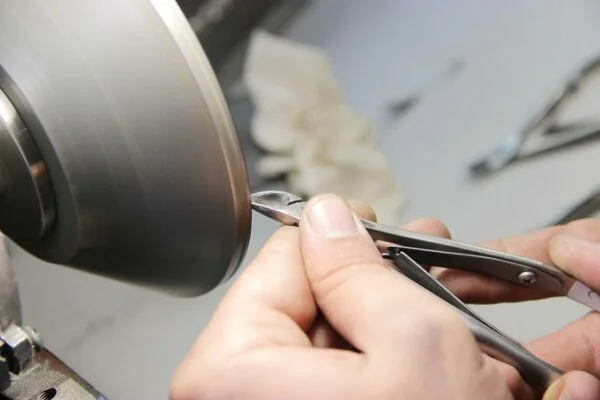
- Use a nail file or sharpening stone: To sharpen your clipper blades, use a fine-grit nail file or a sharpening stone specifically designed for this purpose. Hold the file or stone at an angle consistent with the blade’s edge and gently stroke it across the blade in one direction.
- Clean and test the clippers: After sharpening, clean the clipper blades with a soft brush or cloth to remove any metal filings. Test the clippers on a small piece of paper or a thin nail to ensure they cut smoothly and cleanly.
- Frequency: Depending on the frequency of use and the material of the blades, you may need to sharpen your clippers every few months or once a year. Keep an eye on their cutting performance and sharpen them as needed.
Replacing blades
- Recognize the signs: If you notice your clippers no longer cut as efficiently, even after sharpening, or if the blades appear damaged, chipped, or rusted, it may be time to replace them.
- Find replacement blades: Look for replacement blades compatible with your specific clipper model, as different types of clippers may require unique blade designs. Check the manufacturer’s website or consult the user manual for information on compatible blades.
- Replace the blades: Carefully remove the old blades from the clippers, following the manufacturer’s instructions or referring to the user manual. Attach the new blades securely, ensuring they are properly aligned and fastened.
By keeping your clipper blades sharp and replacing them when necessary, you can maintain the performance of your toenail clippers and ensure a comfortable and effective nail care experience.
Final Thoughts
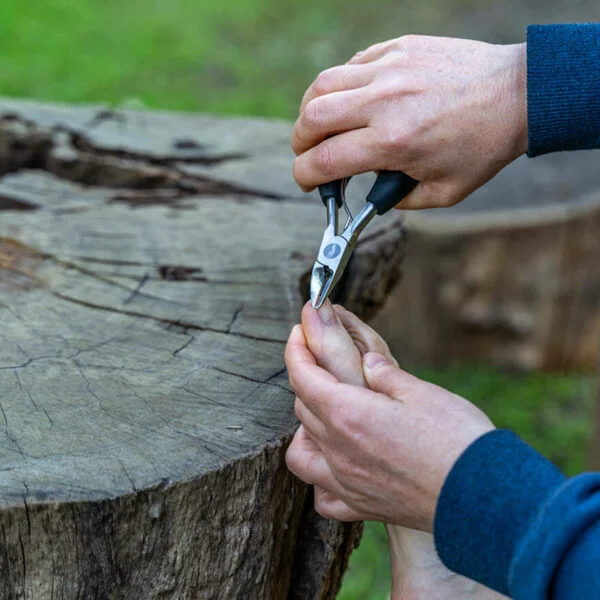
Toenail clippers are essential tools for maintaining healthy and well-groomed nails, and choosing the right one for your needs can significantly impact your nail care experience. By understanding the different types of clippers, such as standard, guillotine, scissor, and nipper clippers, as well as specialized clippers for specific needs, you can make an informed decision on the ideal clipper for you.
In addition to selecting the right type of nail clipper, considering key features such as material, build quality, blade sharpness, size, ergonomics, safety features, and additional accessories can help you find the perfect tool for your nail care routine. Proper use, maintenance, and care of your toenail clippers, including cleaning, sanitizing, sharpening, and replacing blades when necessary, will ensure their longevity and optimal performance.
By investing time and effort in choosing and caring for your toenail clippers, you can achieve a comfortable, efficient, and effective nail care experience, promoting healthier, well-groomed nails for years to come.




